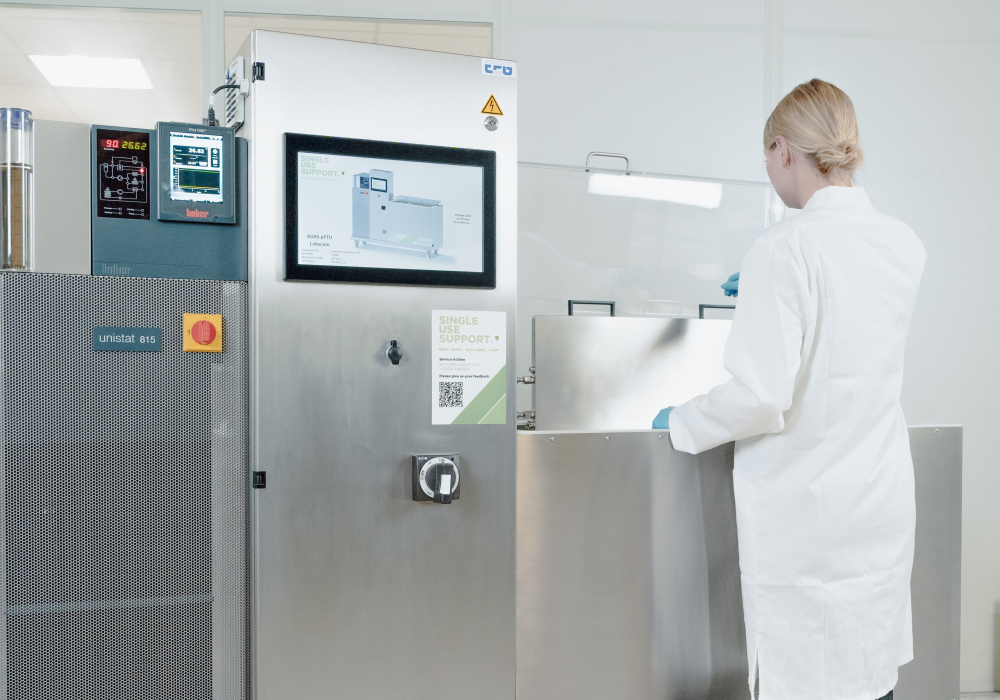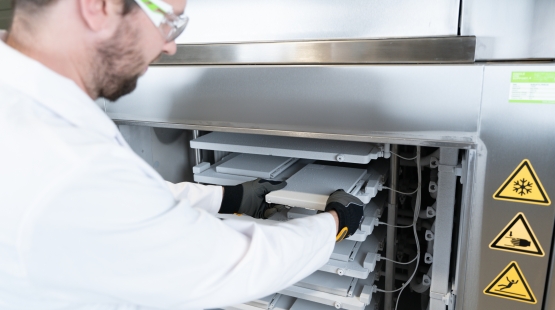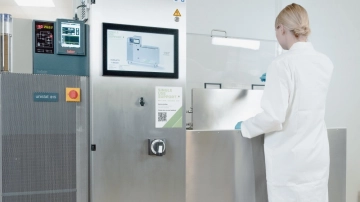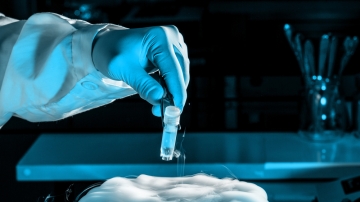Cell bank manufacturing: From master to working cell bank
Table of contents
ShowCell bank manufacturing is an essential part in the production of biopharmaceuticals like antibody drugs or vaccines. A fully functioning, characterized master cell bank is the basis for everyone who wants to ensure reproducibility of a successful product.
In this article, we will take a closer look at the process of cell bank manufacturing and investigate its challenges and supporting solutions.
Definition: What is a cell bank?
The term cell bank refers to the storage of cells with of a specific genome to prolong their viability.1 The purpose of cell banking is to preserve the cells for later use, such as the development and manufacturing of biological products, clinical trials, stem cell research and gene therapy.
By freezing the cells after cell line characterization, it becomes possible to stop the cells’ degradation and any unwanted genetic changes or cross-contaminations. The traditional method to achieve genetic stability is cryopreservation, where the cells are cooled down to temperatures below -80 °C and stored in vapor-phase liquid nitrogen. The advantages of cell banking come in especially useful when large amounts of antibodies have to be produced by cell culture reliably.2
The different types of cell banks are classified according to their status in the manufacturing process. There are research and development cell banks (R&D CBs), master cell banks (MCBs), working cell banks (WCBs), and end of production cell banks (EoPCBs or ECBs).1
The process starts with an R&D CB, a cryopreserved monoclonal cell line that has not yet been fully characterized. This builds the basis for the MCB, which is a pool of cells that have been derived from a single clone with specific genetic traits. The WCB is derived from the MCB and used in the production of the final product like biopharmaceuticals or vaccines. ECBs are generated from MCBs or WCBs for final characterization for adventitious agents and further testing to ensure the genetic stability of the cells and that they are free from contaminants like bacteria, fungi or mycoplasmas.1 2
Cell bank manufacturing – process overview
Cell bank manufacturing is a meticulous process that requires a lot of expertise and the relevant equipment. Due to the sensitivity of raw materials, it is necessary to act quickly and under sterile conditions. Fast and steady freezing rates play a key role in the preservation of the cell bank. As not every cell bank project has the same purpose, the lack of scalability can present a challenge.
Cell line development
The first step in creating a research and development cell bank is cell line development. The applications of stable cell lines range from the production of recombinant proteins and monoclonal antibodies in vitro to drug screening, research and clinical assays.
First, a host cell line has to be selected. There are different options like microbial agents or bacteria, which are mostly suitable for producing smaller biologics, and mammalian cell lines like Chinese Hamster Ovary cells (CHO cells) or Human Embryonic Kidney cells (HEK cells), which have proven valuable in the production of monoclonal antibodies.
The host cells are transfected with plasmids, which lead the cells to express the desired protein. The cells are monitored for expression and transfection rates.3
Manufacturing a master cell line
To establish a master cell line, the characterization of the R&D CB has to be finalized. This requires a lot of testing for cell authentication and quality control, to ensure that the cells have full functionality, show no contamination and are safe to use.
The MCB is aliquoted into multiple containers like vials or single-use bags and preserved through cryogenic freezing. Since the MCB serves as the base material for pharmaceutical products, it is important to store it in different batches to provide easy accessibility for working cell bank production and to prevent the loss of the whole product in case of contamination.
From master cell bank to working cell bank
The working cell bank consists of clones of the MCB which have been cultured in a homogenous suspension under controlled conditions. Both MCB and WCB are undergoing regular testings to ensure that there is no alteration or contamination in the cells.
Establishing an end-of-production cell bank
The end of production cell bank is also often referred to as extended cell bank and is made up of cells at the limit of the in vitro cell age. The cells have been generated from the MCB and WCB and are used for the final characterization and testing of adventitious agents. This ensures further genetic stability and serves as proof that the production system is contaminant-free and stable.
Interview
The end of production cell bank is also often referred to as extended cell bank and is made up of cells at the limit of the in vitro cell age. The cells have been generated from the MCB and WCB and are used for the final characterization and testing of adventitious agents. This ensures further genetic stability and serves as proof that the production system is contaminant-free and stable.

Challenges during and after cell bank production
Cell bank production is a process with many challenges. As the safety of biopharmaceutical products heavily relies on the sterility of raw materials and a contaminant free environment during manufacturing, the Food and Drug Administration (FDA) has determined regulatory measures that have to be followed by companies offering cell banking services and other steps connected to the production of biopharmaceuticals.
Further, current good manufacturing practices (cGMPs) must be followed to ensure a successful and safe final product. GMP does not only involve guidelines in terms of cleanliness for the staff, but also with regard to temperature regulations during the homogenization of cells or freezing cells. These CPP (Critical Process Parameters) are regularly controlled with assessments and validations, e.g. when thawing cells after storage and transport, since these parameters can influence CQAs (Critical Quality Attributes) like cell viability or cell proliferation.
These assessments also include regular testing of the product, as well as reagents and requires up-to-date know-how and equipment like next generation sequencing techniques and cell bank biosafety testing, release testing as well as testing for retroviruses and tumorigenicity with in-vitro assays and in-vivo assays.4
Necessary equipment in cell bank manufacturing
The successful outcome of cell bank manufacturing projects relies on the equipment. When handling cells, the different production steps have to be acted out quickly, in a controlled, contaminant-free environment.
Keeping the cold chain is necessary to keep the cells from degrading. Accurate filling without product loss as well as fast and controlled freezing are the main goal of the manufacturing process to ensure a product that is safe to use.
The needed equipment ranges from cell banking containers like vials or single-use bags and homogenization solutions before freezing to cryogenic freezers and protective packaging during transport.

Cell banking solutions by Single Use Support
To ensure a high cell recovery rate and minimize contamination risks during manufacturing, Single Use Support has developed state-of-the-art equipment to support you and your project.
As cryopreservation of cells is key to efficient upstream processes, we have streamlined the process with fully automated, closed systems that reduce the risk of contamination through human errors and are also scalable to fit your project’s individual needs.
With precise aliquoting with RoSS.FILL to reliable homogenization with RoSS.PADL, Single Use Support encompasses your cell banking project with filling, freezing, thawing and transport solutions. And with its unique plate freezing platform as well as the only really controlled-rate cryogenic LN2 freezer currently on the market, it can now be ensured that cryopreservation is achieved with time- and cost-efficiency.
- Cryopreservation and its clinical applications, http://dx.doi.org/10.1016/j.imr.2016.12.001, Published 2017-01-10
- "Mastering Cell Bank Production," BioPharm International 28 (8), https://, Published 2015
- Development and implementation of a perfusion‐based high cell density cell banking process, http://dx.doi.org/10.1002/btpr.599, Published 2011-03-23
- New Approaches to Cryopreservation of Cells, Tissues, and Organs, http://dx.doi.org/10.1159/000499453, Published 2019-06-04









